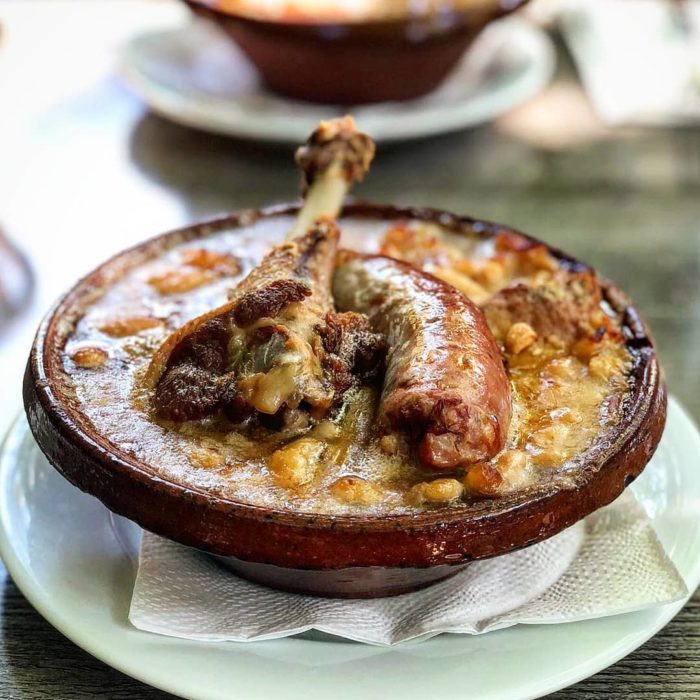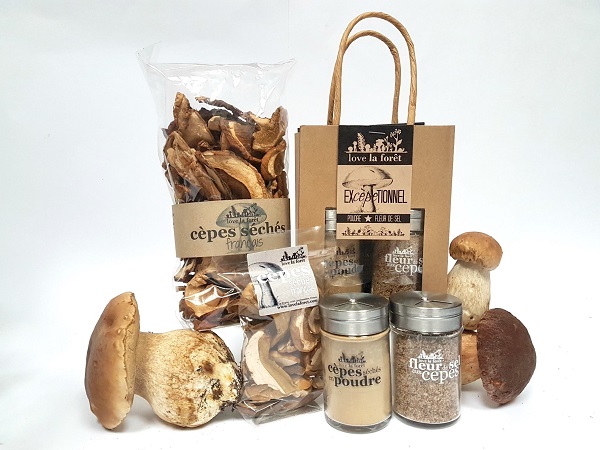The King of Occitan cuisine
Beans, pork rind, goose confit, Toulouse sausage, or partridge... in Carcassonne... with lots of love.
These are the ingredients of the most famous Aude dish, the 'King of Occitan cuisine' according to the great chef Prosper Montagné.
Cassoulet is synonymous with friendship and gathering round a big table, where laughter accompanies the meal. You eat it, with family or friends, like you share some good bread or wine.
Cassoulet was, first of all, a dish of the people, a 'dish for the poor', you'd say. Our region's chefs and those from further afield in France have made it a nationally appreciated meal, making it one of the most commonly eaten dishes in France.
Cassoulet, is a celebration for the senses. An unrivalled aroma wafts in the air. Duck thighs and pieces of mutton and pork simmer in the beans, covered with a golden crust, all in a terracotta bowl. A festival for your taste buds.
To enjoy this moment of culinary happiness, many butchers and delicatessens sell high-quality, 'take-away' cassoulet. But without a shadow of doubt, the best way to delve into its secrets is to enjoy it in one of our restaurants.
The ingredients for a good Cassoulet
- The terracotta cassole, the serving dish, made in Castelnaudary: with a squashed cone shape for better distribution of the heat.
- Lingot beans: These white beans are now only grown in Lauragais.
- Pork rind, duck or pork for the meat. Recommendation: Confit duck thighs.
- Slow cooking on a fire, preferably, breaking the crust regularly
- A bubbling appearance at the end of the final cooking, when you serve it delicately.
- Accompany it with a red wine from Corbières, Minervois, Cabardès or Malepère. And don't forget some crusty bread to mop up the sauce!
According to legend, cassoulet first appeared during the Hundred Years War, when Castelnaudary was under siege by the English. Starving, the residents gathered together any food that was left: bacon, pork, broad beans... to feed their last soldiers. It fed them so well, they chased the English out of the town!
In the 16th century, Alexandre de Medici gave his sister, Catherine, a bag of lingot beans from South America. They were grown in the Lauragais and the broad beans in cassoulet were replaced.
In 1929, Proposer Montagné, the famous chef from Carcassonne, acknowledged the supremacy of Castelnaudary Cassoulet in his book 'Le Festin Occitan' saying, "Cassoulet is the king of Occitan cuisine."
“We have wanted to try the real thing, the famous Cathar Country cassoulet, for a long time. And now that we have, we don't regret it! Generous, rich flavours, melt in the mouth, and accompanied by a good red wine. I can still taste it. I strongly recommend you to try it. Anyway, when I come back, I'll definitely make some time for a 'Cassoulet break'!"
Carcassonne cassoulet vs Castelnaudary cassoulet
According to Prosper Montagne:
Castelnaudary cassoulet is the 'Father',
Lingot beans, confit, pork loin, belly, rind, shanks, onion bouquet garni, seasoning…
Carcassone cassoulet is the 'Son',
you add red-legged partridge to the recipe
Toulouse cassoulet is the 'Holy Spirit'
you add lamb, mutton and then, at the end of cooking, pork rind sausage and duck confit, then cover it with Toulouse sausage.
The Académie Universelle du Cassoulet has its headquarters in Carcassonne and promotes our speciality at events in France and abroad.
The gourmet cassoulet route from Castelnaudary to Carcassonne
Show your guests a little originality by serving them a delicious frozen dessert, made by an artisan ice-cream maker from Carcassonne.
The Cassoulet Glacé, a nougatine cassolette, or serving dish, filled with vanilla ice-cream and chestnuts or cherries. Delicious!
Address: Boulangerie Bimas in Carcassonne: 7 Avenue Arthur Mullot, Pont Neuf - Carcassonne


